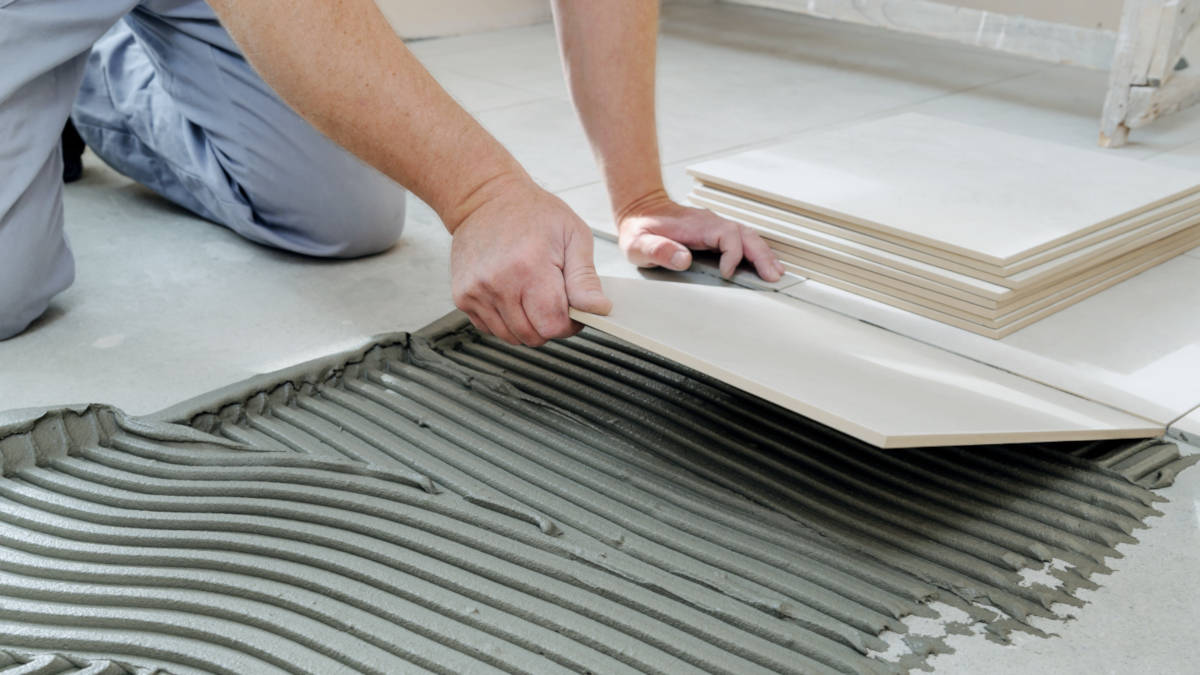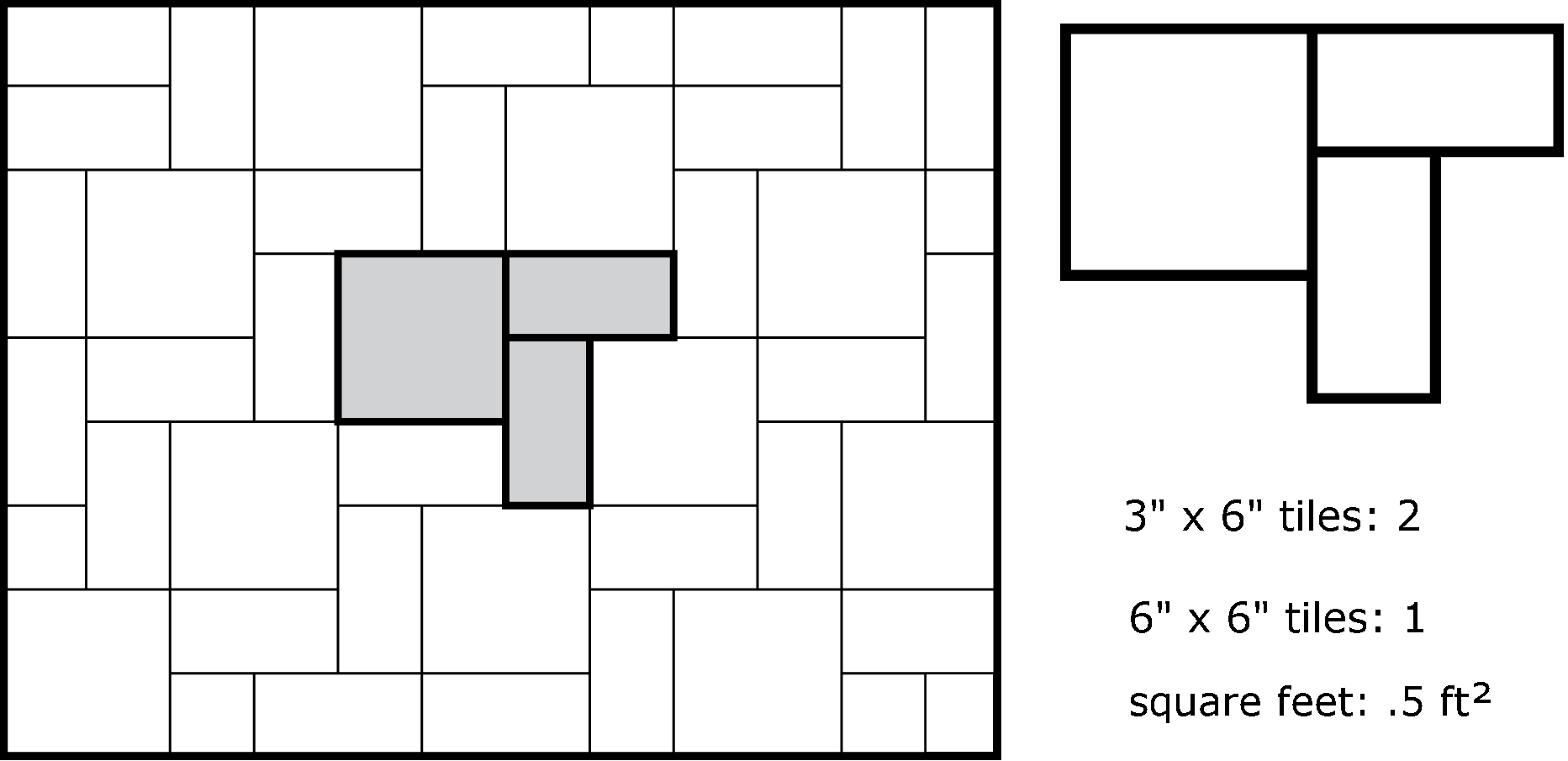Tile Calculator and Cost Estimator
Result
Tiles Needed:
Boxes Needed:
Material Cost
Estimated Price:
Total Area
Square Feet:
Square Meters:
How to Calculate How Much Tile You Need
Tile is a very popular option for flooring and backsplash projects. Tiles are durable, easy to
clean, and have endless design possibilities.
They are available in many sizes and materials, including glass, ceramic, porcelain, and natural
stone. They can be used anywhere in and around the home, with bathrooms, backsplashes, and
flooring being the most common areas.
Because tiles come in so many sizes and there are so many installed patterns available, it can seem complicated to estimate how much tile you may need for a project. Tile estimates are fairly simple to calculate, though, once you have a few pieces of information.
You can calculate how much tile you need in just a few easy steps.
Step One: Calculate the Floor or Backsplash Area
The first step is to know how large of an area you want to cover. Begin by measuring the room or
wall lengths and widths in feet, then multiply these measurements together to get the area in
square feet.
To measure like a pro, learn pro tips for measuring irregular rooms.
For smaller spaces, such as a kitchen backsplash, you may find it easier to measure in inches.
Inches are easier to use for smaller spaces because, in most cases, these will fall somewhere
between even feet measurements.
If you measured in inches, then multiply the length and width of each area in inches together to
get the square inches of that area. Divide by 144 to convert to square feet.
Measure smaller areas individually. Then, add all your areas together. Plug the total lengths
and widths into the calculator above.

In some cases, tile is sold by the square foot. If that’s the case for the tile you’re ordering,
then you can use the square footage of the space to order your material.
Most tiles are sold by the box, which may contain varying amounts of square feet. Keep reading
to see how to determine how many tiles you may need for a flooring or backsplash project.
Step Two: Calculate the Area of the Tile
Tiles come in many sizes, and costs vary widely. Some can be purchased individually or in
individual sheets, and some by the box. Boxes and sheets cover different square foot areas as
well.
If you know what tiles you would like to use, enter the size into the calculator above. Don’t
forget to enter how much square footage the box covers if you use that method.
If you are using sheets, enter the sheet size. The calculator will also give you a cost estimate
if you know the price per tile, sheet, or box.
To do this calculation yourself, take your tile size in square inches and divide it by 144
(12in. x 12in.). This gives you the tile size in sq ft.
Step Three: Estimate Tile Quantity
Once you know the area you need to cover and the area of each tile, divide the total area by the
tile size in sq ft. This will give you the number of tiles you need for your space.
For boxes, divide the area by the sq ft coverage for the box.
Use the result to order your tiles, keeping in mind that ordering an extra 10% to 20% is a good
idea to allow for cuts and waste. 10% is standard for straight-set installations; if you are
using a pattern or laying the tiles on the diagonal, 15% to 20% extra is recommended.
For example, to estimate tile for a kitchen backsplash area that is 12′ long and 18″ deep using a 4″ x 4″ tile.
Step one: measure the area to cover:
Step two: measure tile area:
Step three: estimate tile Find the total number of tiles needed: 18 sq ft ÷ 0.111 sq ft × 1.1 (overage) = 178
How to Estimate Tile Patterns
Kitchen and bath tile is often installed in a pattern using different sizes. To estimate the
amount of tile you’ll need, you can find the square footage of the repeating pattern and then
estimate how many instances of that pattern are needed, then multiply by the number needed to
create the pattern.
For instance, if your pattern requires one 6×6 and two 3×6 tiles, then add the square footage of
both tiles together to find the square footage of the pattern. Then divide the floor ft2 by the
tile ft2.

Keep in mind, however, that if the tile is not sold as a packaged pattern, you will need to
determine the square footage of each tile separately, and order that amount, then piece the
tiles together in the pattern.
For example, using the above tile sizes, you would need equal amounts of both tiles – simply
divide the total square footage in half, add 20% for waste, and order equal amounts of each
size. However, for other tile sizes and patterns, you may need more square footage of one tile
than another, so the tiles will need to be calculated separately.
Some layout patterns that use the same size tiles, such as a herringbone, subway pattern, or
diagonal pattern, may also influence how much material will be required since there will be
varying amounts of cuts and waste when using different layouts.
While some patterns result in more waste than others, a good rule of thumb is when installing
tile at an angle, consider ordering 20% additional material to account for more cuts and waste.
How to Estimate Thinset or Mastic
You’ll need to choose either thinset or mastic to adhere your tiles, the which you choose depends
on your tiling application. Some tile materials, such as stone or glass, will dictate that you
use a latex-modified, white thinset mortar.
Ceramic and porcelain tiles may use thinset on the floor and mastic on the walls, however, if
you are choosing to use a large format tile on the walls, you will also need a latex-modified
thinset mortar to hold the weight of the larger tiles.
Calculating how much thinset or mastic you need requires choosing a trowel size for your
project. Larger and smaller notch trowels require more or less thinset.
Different thinset and mastic products will cover different amounts, and most will have a
coverage chart on the bag indicating how many square feet the product covers for your trowel. If
you don’t have access to the coverage chart, you can learn how to estimate thinset material.